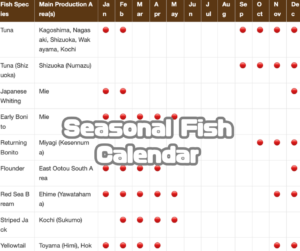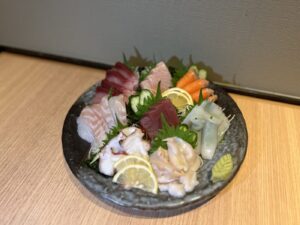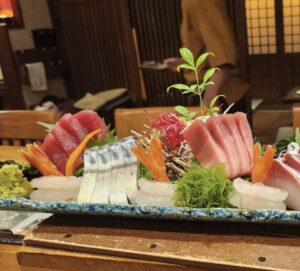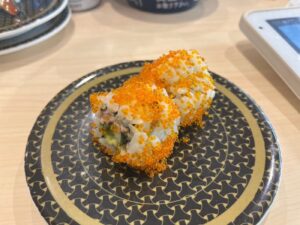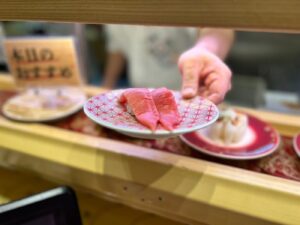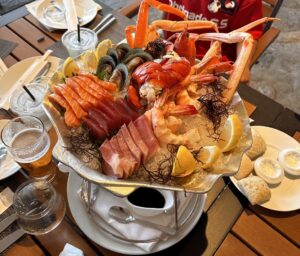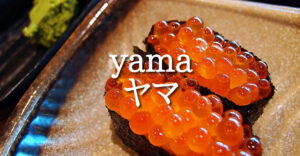Glossary of terms related to sushi

Here is the English translation of the sushi-related words and terms you provided:
■ Agari
Refers to tea. Originally from the world of geisha, it means “the last one.” Similar to the final move in a board game or the last accompaniment in entertainment, in many sushi restaurants, powdered tea or coarse tea is served.
■ Aniki
Sushi chef’s secret language. It refers to the ingredients used first. Conversely, ingredients used later are called “otouto.”
■ Ara
Jikomi Pre-processing ingredients to a certain extent. When the ingredients are further prepared, it’s called “nakajikomi.”
■ Odori
Nigiri sushi made with live shrimp. It’s named after the shrimp’s lively movements resembling a dance.
■ Kappa
Refers to cucumber. The name comes from the similarity of the cross-section of a cucumber to the head of a kappa (a mythical water creature), or it might be because kappa is said to love cucumbers.
■ Gari
Refers to pickled ginger. The name comes from the crunchy sound (“gari gari”) when bitten. Besides refreshing the palate, Gari serves the purpose of removing the fishy smell and has antibacterial properties.
■ Gyoku (Tamago)
Refers to sweet rolled omelet. The term comes from the on’yomi (Chinese reading) of the character “玉” (gyoku).
■ Kusa
Refers to seaweed. It’s called “kusa” because seaweed is also known as “kaiso” (sea vegetable).
■ Gunkan Maki
Sushi wrapped in seaweed with shari (sushi rice) and neta (topping). Examples include ikura (salmon roe), uni (sea urchin), and kobashira (mollusk).
■ Geso
Refers to squid legs. It comes from the term “gesoku” (footwear), which is what removed footwear is called.
■ Geta
The base on which sushi is placed. It looks like geta (traditional Japanese footwear) when viewed from the side.
■ Shari
Refers to sushi rice. It originates from “busshari” (Buddha’s relics). In some regions, it’s also called “aka shari” (red shari), which is made using aged red vinegar derived from matured sake lees.
■ Tachi
Originally, sushi chefs used to prepare and serve sushi at stalls. After the war, due to hygiene reasons, sushi began to be made inside the shops, and the term “tachi” came to represent standing while making sushi.
■ Tane, Neta
Refers to sushi ingredients.
■ Dzuke
Marinating tuna in soy sauce. The term comes from the practice of marinating fish to preserve it for an extended period.
■ Tsukeba
Refers to the sushi chef’s kitchen. The term might come from the fact that the preparation and serving of sushi were called “tsukeru,” or it could be related to the historical practice of marinating fish.
■ Tsume (Ni Tsume)
Sweet sauce made by simmering eel. It is applied to dishes like anago (conger eel) or shako (mantis shrimp).
■ Tekka
A type of norimaki (rolled sushi) with a center of tuna. It originated from the term “tekka-ba,” which referred to gambling places where such convenient sushi was made while playing.
■ Tenchi
Refers to the head and tail parts of ingredients.
■ Toro
Refers to the fatty part of tuna belly. It is named for its “toro” (melting) texture due to its high-fat content.
■ Donshari
Refers to regular rice, not sushi rice.
■ Namida
Refers to wasabi. The name comes from the fact that consuming too much wasabi can make tears flow.
■ Nikiri
A sauce made by adding sake and other ingredients to soy sauce and simmering it to eliminate the soy sauce’s smell.
■ Hikarimono
Shiny fish within sushi. It refers to fish like kohada (gizzard shad), aji (horse mackerel), sanma (Pacific saury), iwashi (sardine), etc.
■ Murasaki
Refers to soy sauce. It comes from the color of soy sauce.
■ Yama
Refers to bamboo leaves. It is called “yama” because it is obtained from mountains.


